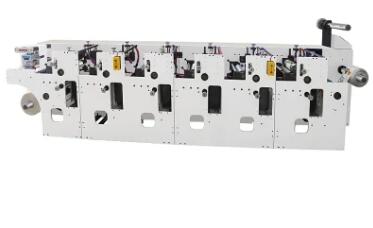What safety and environmental considerations should be taken into account when operating printing machinery
2023-10-25
When operating printing machinery, it's essential to consider safety and environmental factors to protect both workers and the environment. Here are some key considerations:
Safety Considerations:
1. Training and Certification: Ensure that operators are adequately trained and certified to operate the printing machinery. Proper training is essential to prevent accidents and ensure safe operation.
2. Machine Guards: Use appropriate machine guards and safety interlocks to protect operators from moving parts and potential pinch points on the machinery.
3. Emergency Stops: Install easily accessible emergency stop buttons and make sure all personnel know their locations. These can quickly shut down the machinery in case of an emergency.
4. PPE (Personal Protective Equipment): Provide and require the use of PPE, including safety glasses, ear protection, and gloves, as necessary. The specific PPE will depend on the type of printing machinery and the associated risks.
5. Fire Safety: Printing machinery can generate heat and sparks, making fire safety crucial. Install fire suppression systems, ensure adequate fire exits, and regularly inspect fire safety equipment.
6. Ventilation: Adequate ventilation is essential to remove fumes, odors, and airborne particles produced during the printing process. Proper ventilation protects workers' health and prevents the accumulation of harmful substances in the air.
7. Ergonomics: Ensure that workstations are ergonomically designed to reduce strain and prevent repetitive stress injuries. Proper seating, lighting, and adjustable work surfaces are important for operator safety.
8. Machine Inspections: Implement a regular inspection schedule to check for loose or damaged parts, signs of wear, and potential safety hazards. Address any issues promptly.
9. Lockout/Tagout Procedures: Develop and implement lockout/tagout procedures to ensure machinery is de-energized and secured during maintenance or repairs, preventing accidental startup.
Environmental Considerations:
1. Ink and Chemical Management: Properly handle, store, and dispose of inks, chemicals, and solvents used in the printing process. Some of these materials may be hazardous or harmful to the environment.
2. Waste Management: Implement recycling and waste management programs to reduce the environmental impact of discarded printing materials and waste ink. This may include recycling paper, cardboard, and empty ink containers.
3. Hazardous Materials: Ensure compliance with regulations regarding the use and disposal of hazardous materials. Properly label and store chemicals, and follow guidelines for handling and disposal.
4. Energy Efficiency: Use energy-efficient lighting, HVAC systems, and printing machinery. Lowering energy consumption reduces the environmental footprint of the printing process.
5. Eco-Friendly Inks: Consider using environmentally friendly or low-VOC (volatile organic compounds) inks that have fewer environmental and health impacts.
6. Wastewater Management: If the printing process generates wastewater, ensure that it is treated and discharged in compliance with environmental regulations.
7. Noise Pollution: Minimize noise pollution by installing sound barriers or isolating loud machinery to protect workers and nearby communities.
8. Sustainability Initiatives: Explore sustainability initiatives such as certifications (e.g., FSC for responsibly sourced paper) and green printing practices to reduce the environmental impact of printing.
9. Compliance: Stay informed about local, regional, and national environmental regulations. Ensure compliance with laws governing emissions, waste disposal, and other environmental aspects of the printing process.
By addressing these safety and environmental considerations, printing facilities can maintain a safe working environment, reduce their environmental impact, and meet regulatory requirements. These practices also contribute to sustainability and responsible business operations in the printing industry.



